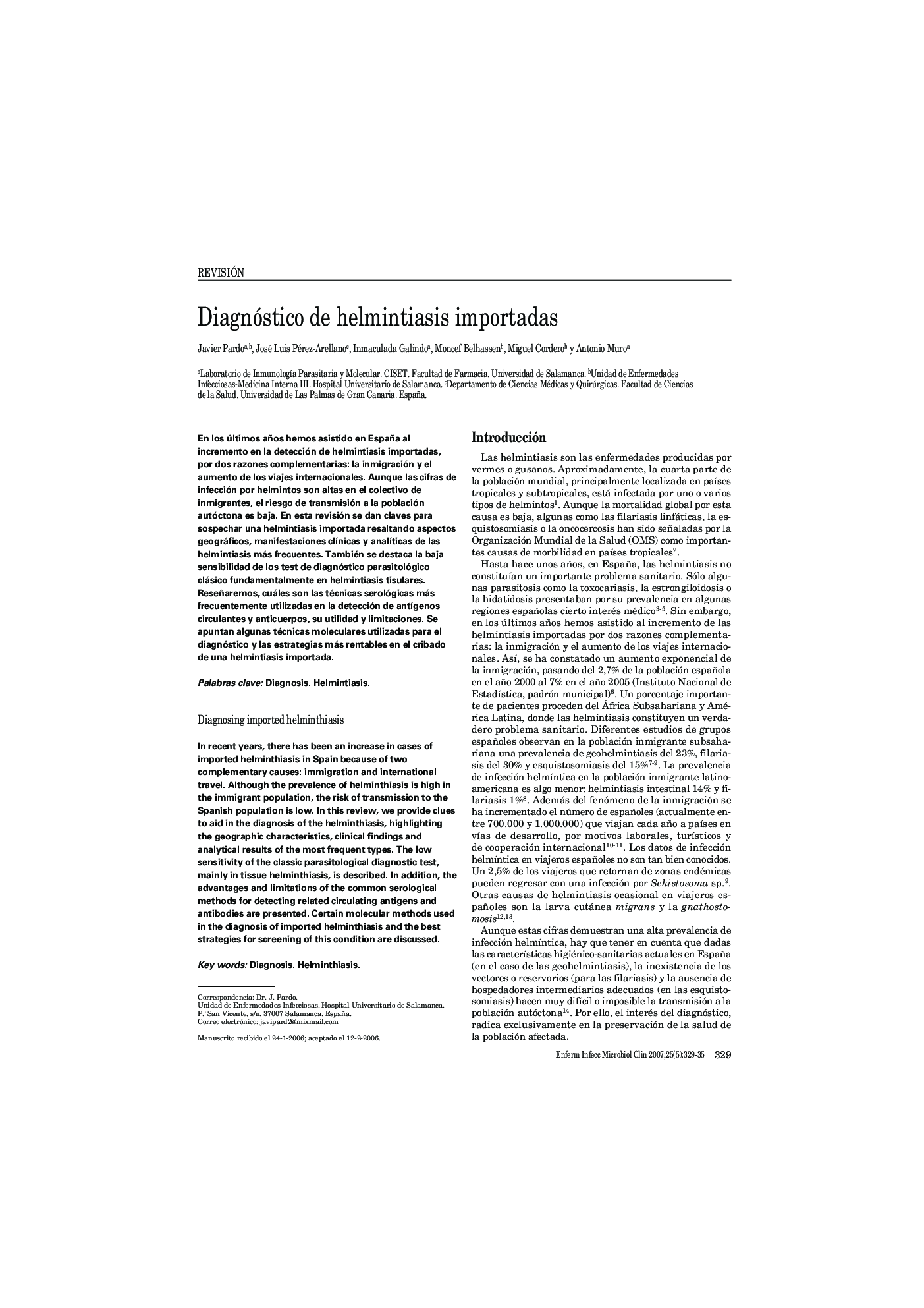| Article ID | Journal | Published Year | Pages | File Type |
|---|---|---|---|---|
| 3403031 | Enfermedades Infecciosas y Microbiología Clínica | 2007 | 7 Pages |
Abstract
In recent years, there has been an increase in cases of imported helminthiasis in Spain because of two complementary causes: immigration and international travel. Although the prevalence of helminthiasis is high in the immigrant population, the risk of transmission to the Spanish population is low. In this review, we provide clues to aid in the diagnosis of the helminthiasis, highlighting the geographic characteristics, clinical findings and analytical results of the most frequent types. The low sensitivity of the classic parasitological diagnostic test, mainly in tissue helminthiasis, is described. In addition, the advantages and limitations of the common serological methods for detecting related circulating antigens and antibodies are presented. Certain molecular methods used in the diagnosis of imported helminthiasis and the best strategies for screening of this condition are discussed.
Keywords
Related Topics
Life Sciences
Immunology and Microbiology
Microbiology
Authors
Javier Pardo, José Luis Pérez-Arellano, Inmaculada Galindo, Moncef Belhassen, Miguel Cordero, Antonio Muro,
